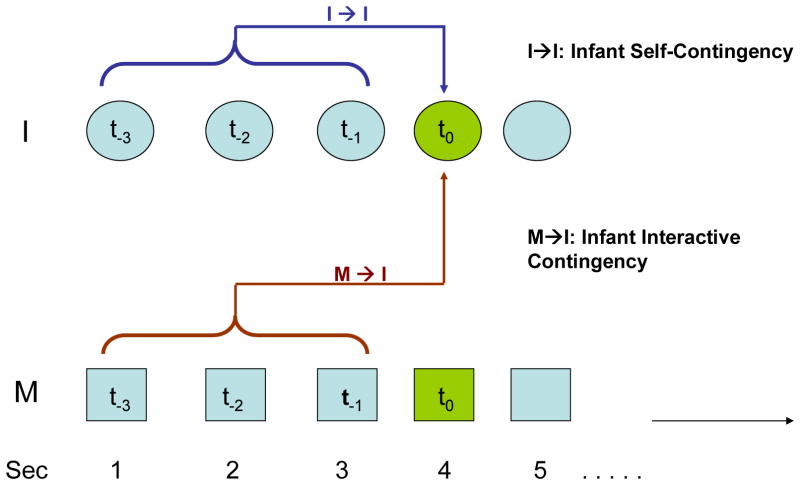Figure 2.
Illustrations of Infant Self- and Interactive Contingencies Defined by Time-Series Analysis.
Note. To calculate infant self-contingency, second 4 in the infant’s stream of behavior identifies t0, the predicted second. A weighted average of seconds t-1, t-2, and t-3 in the infant’s behavioral stream identify the “weighted lag,” which is used to predict t0. To calculate infant interactive contingency, a weighted average of seconds t-1, t-2, and t-3 in the mother’s behavioral stream is used to predict t0 in the infant’s behavioral stream. For both self- and interactive contingency, this is an iterative process in which second 5 will then identify the new t0, and seconds 2, 3, and 4 will identify the new “weighted lag.” A parallel diagram would depict mother self- and interactive contingency.

